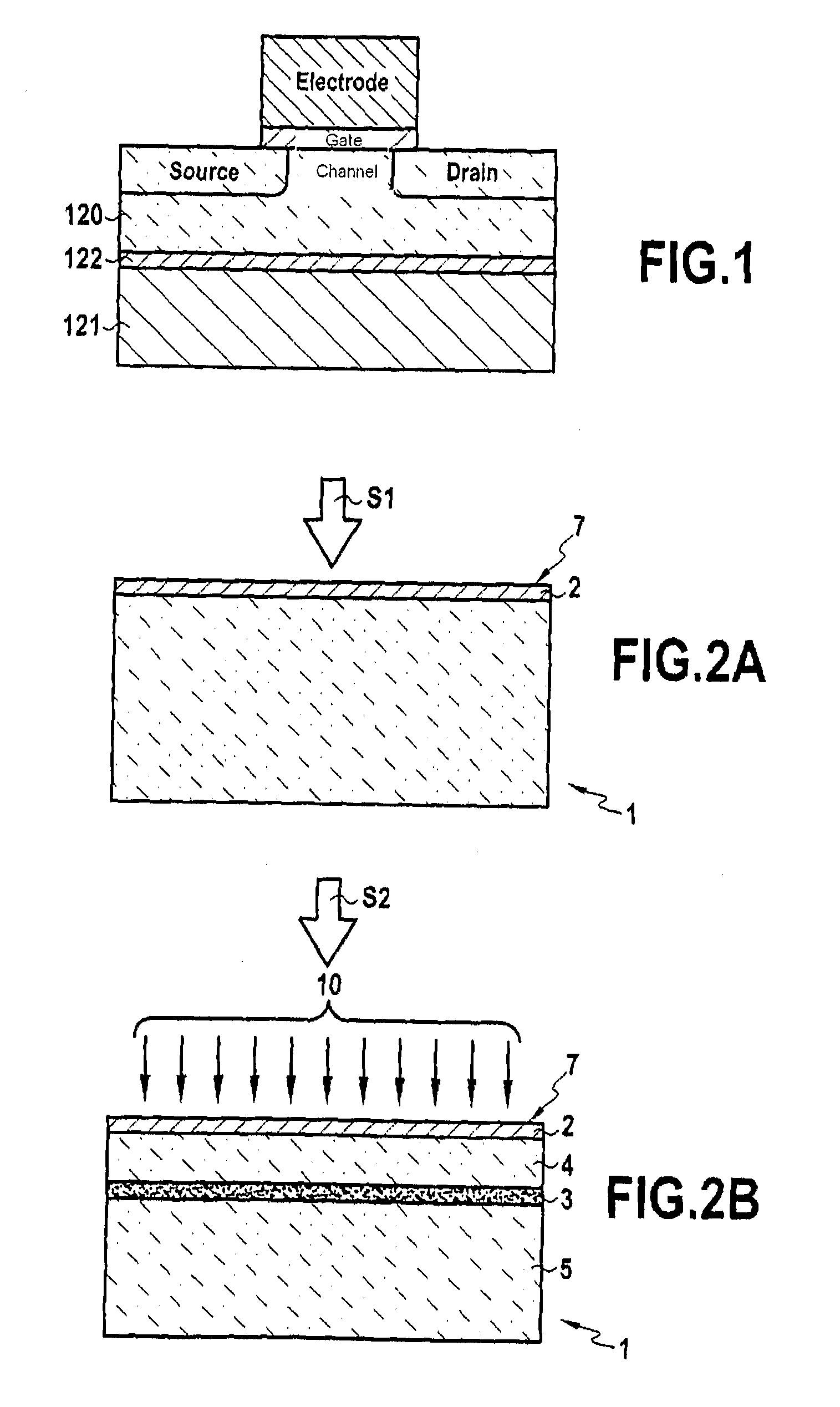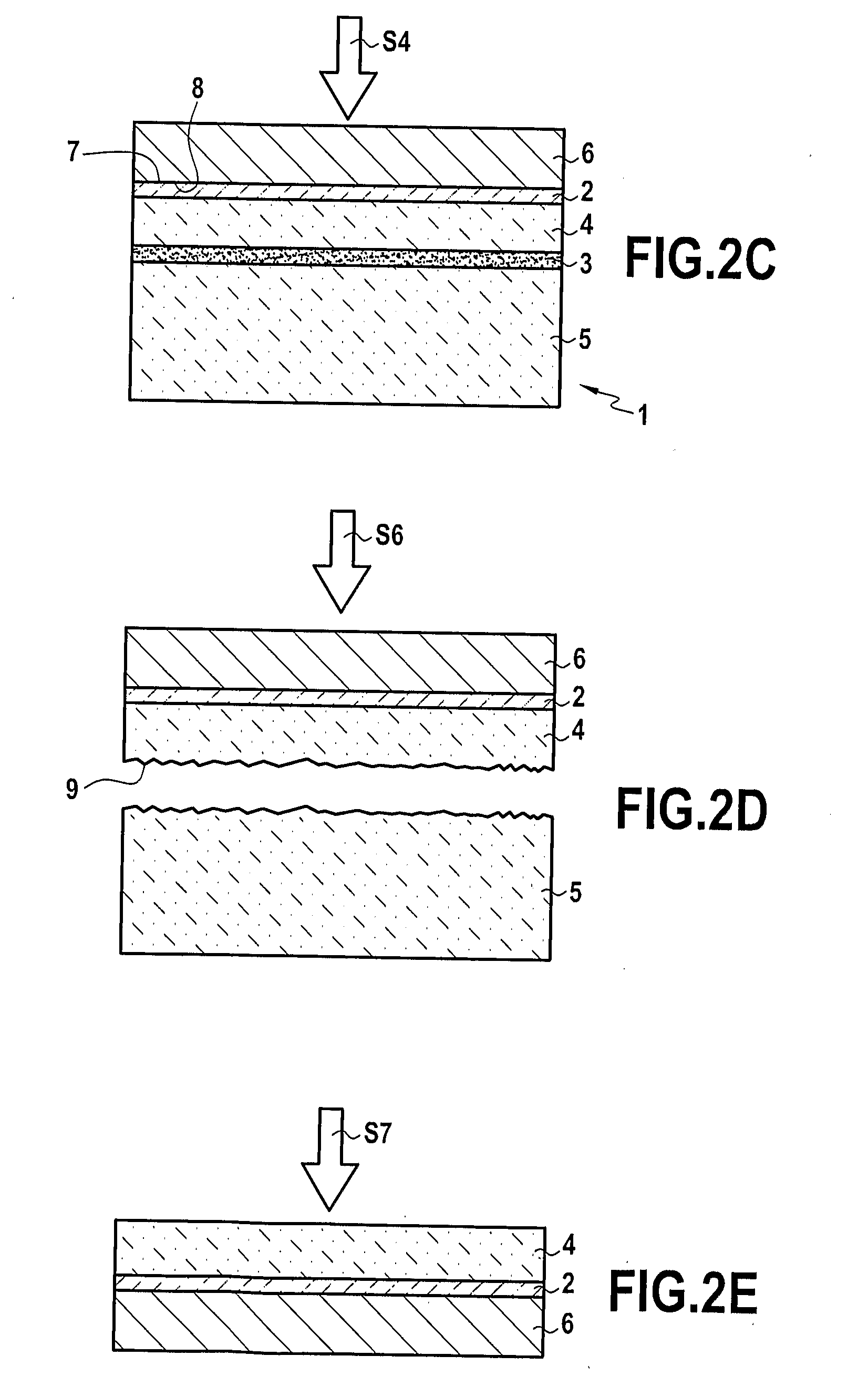Method of producing an soi structure with an insulating layer of controlled thickness
a technology of insulating layer and soi structure, which is applied in the field of soi structure production with a controlled thickness, can solve the problems of deteriorating the bonding quality, weak reduction of threshold voltage and saturation current, and deterioration of some of the electrical characteristics of the soi structure, so as to reduce parasitic effects and short channel effects, good bonding
- Summary
- Abstract
- Description
- Claims
- Application Information
AI Technical Summary
Benefits of technology
Problems solved by technology
Method used
Image
Examples
Embodiment Construction
[0041]The present invention applies to any method for making SOI (“Silicon On Insulator”) or SeOI (“Semiconductor On Insulator) type structures implementing at least the formation of an insulating layer on a donor substrate and / or on a receiving substrate, ionic implantation of the donor substrate to delimit a layer to transfer by an embrittlement plane, bonding of the implanted donor substrate on a receiving substrate and detachment of the layer to transfer from the donor substrate, as in Smart Cut™ technology.
[0042]The principle of the invention consists of forming an insulating layer with a higher permittivity than that presented by the thin insulating layers usually encountered in SOI type structures and particularly in SiO2 layers. Indeed, the applicant has observed that by using an insulating layer with high permittivity in this type of structure, it is possible to have, with equivalent capacitance, a buried insulating layer with a thickness sufficient for facilitating and gua...
PUM
| Property | Measurement | Unit |
|---|---|---|
| thickness | aaaaa | aaaaa |
| dielectric constant | aaaaa | aaaaa |
| thickness | aaaaa | aaaaa |
Abstract
Description
Claims
Application Information
 Login to View More
Login to View More - R&D
- Intellectual Property
- Life Sciences
- Materials
- Tech Scout
- Unparalleled Data Quality
- Higher Quality Content
- 60% Fewer Hallucinations
Browse by: Latest US Patents, China's latest patents, Technical Efficacy Thesaurus, Application Domain, Technology Topic, Popular Technical Reports.
© 2025 PatSnap. All rights reserved.Legal|Privacy policy|Modern Slavery Act Transparency Statement|Sitemap|About US| Contact US: help@patsnap.com



